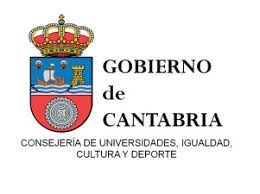On theatrical communication. Notes on pragmatics of the secondary text
DOI:
https://doi.org/10.55422/bbmp.103Keywords:
Didascalias, Communicative situation, Main text, Secondary textAbstract
The objective of the following article is threefold: to address the complexity of the communicative situation that arises in the theatrical text as a whole, to assess the fictional dimension of didactic discourse and to point out the expansion of the scope of study of didascalias. That is, an analysis of the importance of didascalias is carried out to define a communicative situation, from the theory of communication, the theory of fiction and genetic criticism. It is intended to give a new approach to the study of didascalias.
Downloads
Publication Facts
Reviewer profiles N/A
Author statements
Indexed in
- Academic society
- Sociedad Menéndez Pelayo
- Publisher
- Sociedad Menéndez Pelayo
Global Statistics ℹ️
|
171
Views
|
119
Downloads
|
|
290
Total
|
|
References
ABUÍN, Anxo (1997). El narrador en el teatro. Santiago de Compostela: Universidad.
BOBES NAVES, Carmen (1987). Semiología de la obra teatral. Madrid: Taurus.
— (comp.) (1997) Teoría del teatro, Madrid: Arco.
CUETO, Magdalena (1986). «La doble enunciación del texto dramático», en Lingüística Española Actual, VIII, pp. 195-207.
GOLOPENTIA, Sanda (1999). «Jeux didascaliques et espaces mentaux», en M. Martinez Thomas, 1990a, pp. 15-41.
INGARDEN, Roman (1958). «Les fonctions du langage au théâtre», en Poétique, nº 8, pp. 531-538.
ISSACHAROFF, Michael (1993). «Voix, autorité, didascalies», en Poétique, nº 96, pp. 463-474.
MARTINEZ THOMAS, Monique (1996). «El juego del didascalos. Las didascalias antifuncionales en Las comedias bárbaras de Valle-Inclán», en Imprévue, Montpellier, 1996, pp. 67-92.
— (ed.) (1999a). Jouer les didascalies. Toulouse: Presses Universitaires du Mirail.
— (1999b). «Le didascale, acteur principal dans la pièce Los figurantes de José Sanchis Sinisterra», en M. Martinez Thomas (ed.), Jouer les didascalies, pp. 107-123.
PÉREZ BOWIE, José A. (1993). «Sobre pragmática del texto teatral: el ‘hablante dramático básico’ en el teatro de Alfonso Sastre”, en Bartol, J.A., García Santos, J.F. y De Santiago, J. (eds.), Estudios filológicos en homenaje a Eugenio de Bustos Tovar, Salamanca: Universidad, pp. 733747.
— (1999). «Dimensión ficcional y dimensión metaficcional del texto secundario (Sobre el último teatro de Alfonso Sastre)», en J.A. Ascunce (ed.), Once ensayos en busca de un autor: Alfonso Sastre, Hondarribia. Hiru, pp. 305-339.
PRODOMIDÈS, François (1997). «Le théatre de la lecture. Texte et spectacle dans La pratique du théâtre de d’Aubignac», Poétique, nº 112, pp. 423-443.
SCHAEFFER, Jean-Marie (2002). ¿Por qué la ficción?, Madrid: Lengua de Trapo.
SPANG, Kurt (1991). Teoría del drama. Lectura y análisis de la obra teatral. Pamplona: Eunsa.
THOMASSEAU, Jean-Marie (1997). «Para un análisis del para-texto teatral», en C. Bobes (comp.), Teoría del teatro, pp. 83-118.
— (1999). «Les didascalies et les jardins», en Martinez Thomas, 1999a, pp. 7-12.
VELTRUSKY, Jiri (1997). «El texto dramático como uno de los componentes del teatro», en C. Bobes (comp.), Teoría del teatro, pp. 31-55.
VILLEGAS, Juan (1982). Interpretación y análisis del texto dramático, Ottawa. Giral Books.
Downloads
Published
How to Cite
Issue
Section
License

This work is licensed under a Creative Commons Attribution-NonCommercial 4.0 International License.







